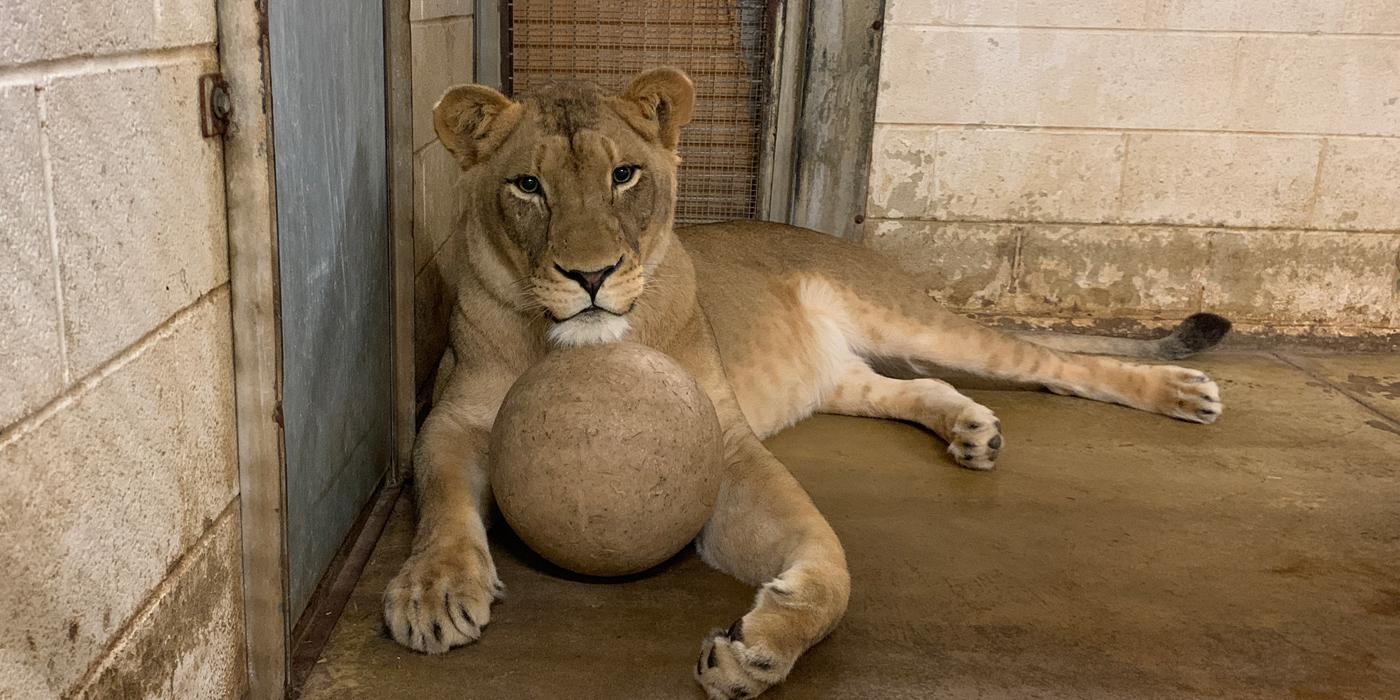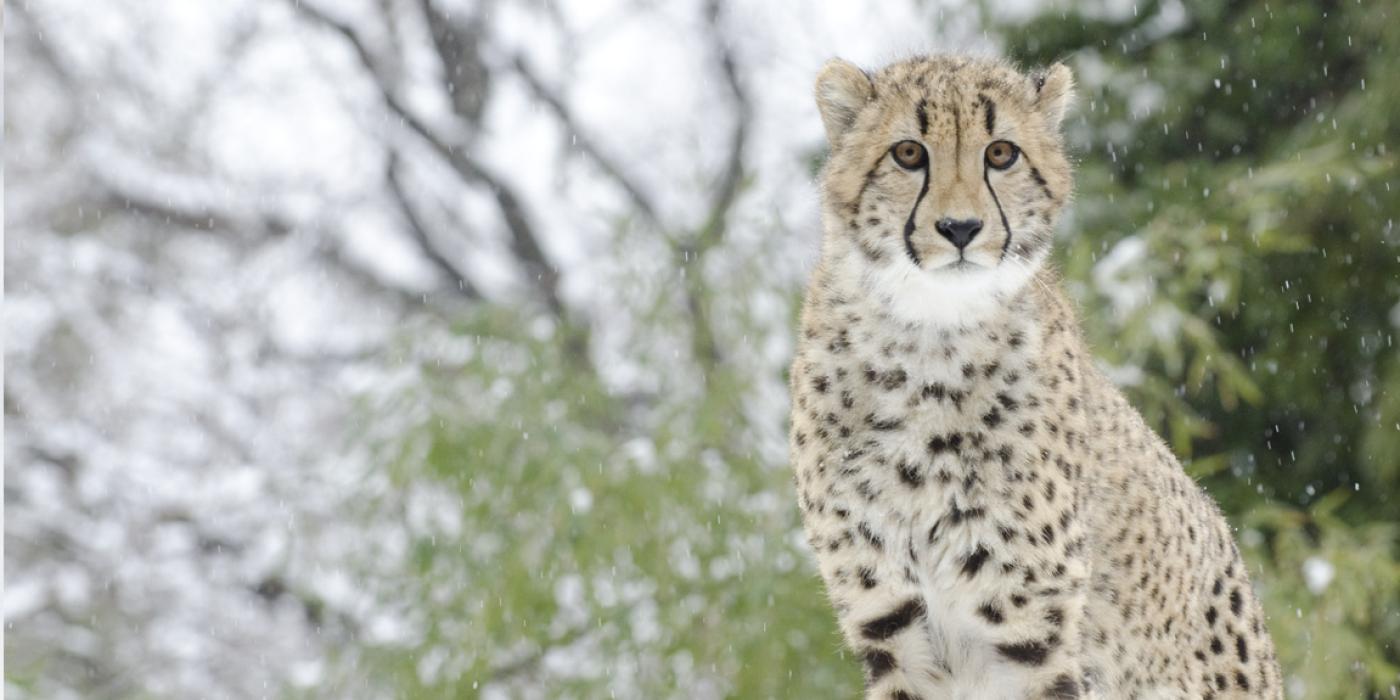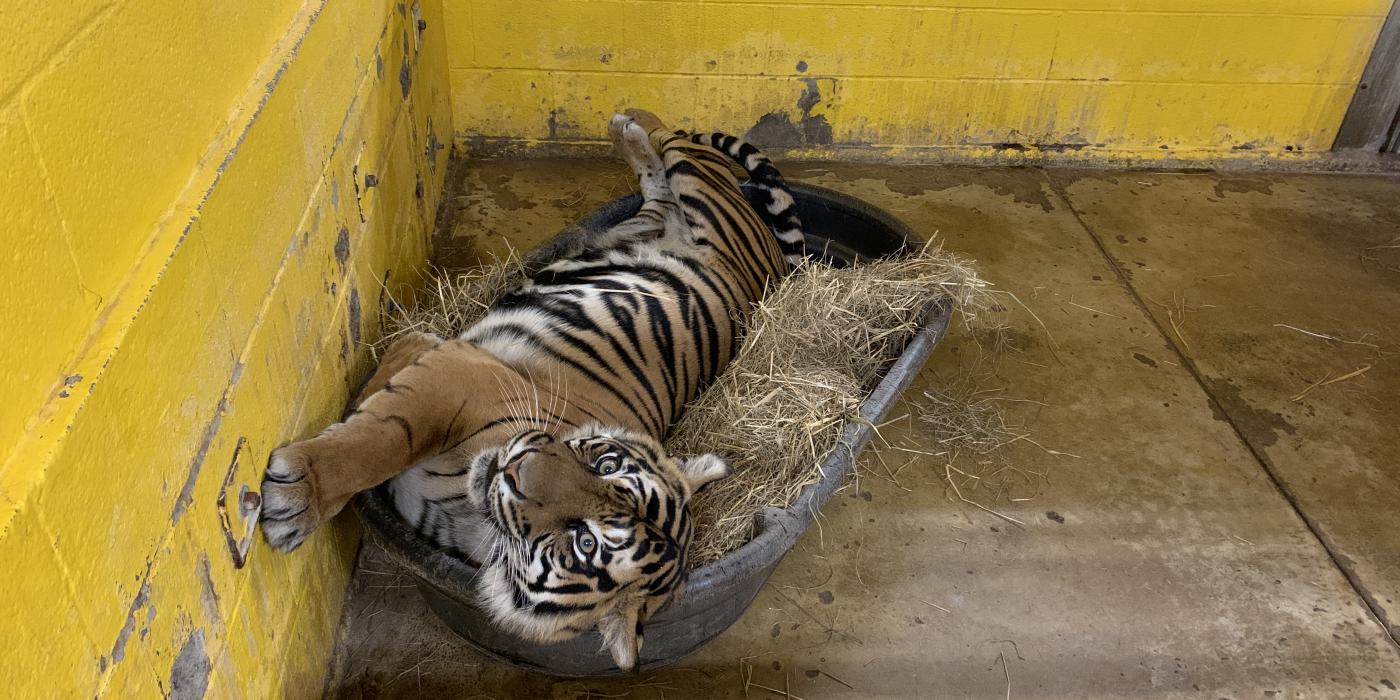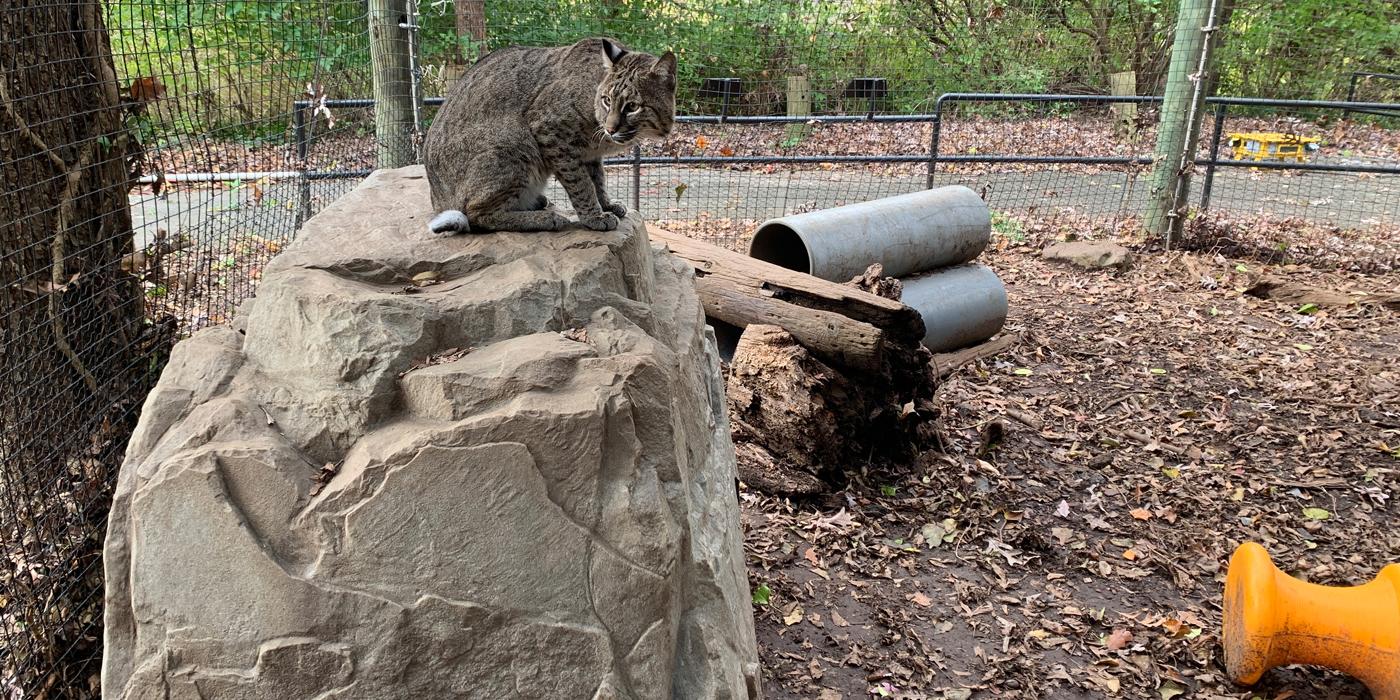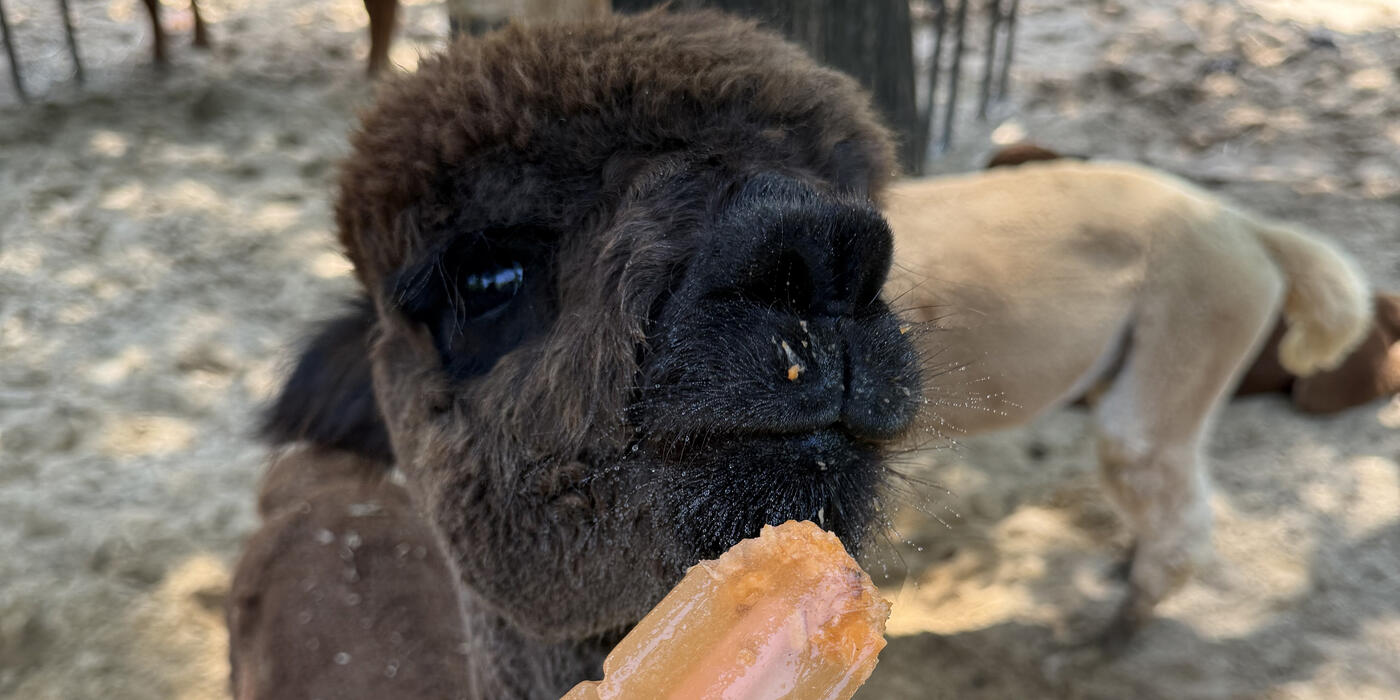Pouncing On Enrichment: How to Care for Lions, Cheetahs and Other Great Cats
Lions, tigers, cheetahs and bobcats – let’s play! Keeper Katy Juliano works at Great Cats and Bears with the Zoo’s six lions and three bobcats. Keepers Adri Kopp and Amber Dedrick work primarily with cheetahs at the Smithsonian Conservation and Biology Institute (SCBI). All three know how to get their cats pouncing, roaring and purring for enrichment.
In the wild, cats exhibit certain natural behaviors to help them survive. One way to help elicit these behaviors in human care is to give the cats enrichment! Enrichment can be anything from chasing a ball to elicit hunting behavior to sniffing new scents or changing exhibit features. It’s more than just a toy, enrichment is just as important as good medical care and nutrition.
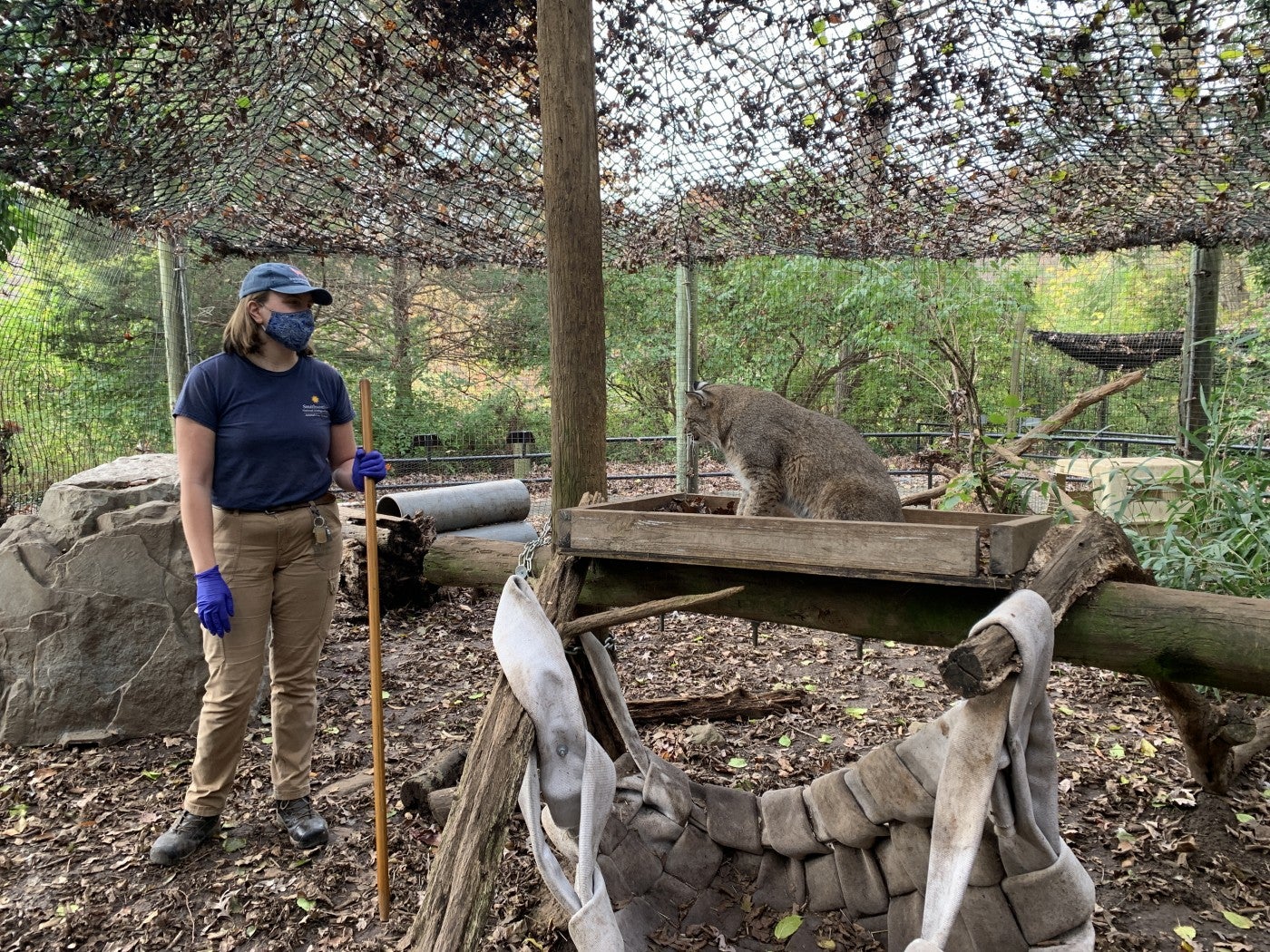
Katy: Cats are incredible and powerful animals with complex personalities. They have different reactions and relationships to each other and to us humans!
Social interactions are a huge part of lions’ lives. Prides are fluid in the wild. Females tend to stay with related females. Males usually leave the pride, sometimes with a brother they get along with or on their own.
Here at Smithsonian’s National Zoo, we have three males and three females. Our females—sisters Naba and Shera, and Shera’s daughter, Amahle — all live together. Our two younger males, brothers Shaka and Jumbe — also live together. Luke, our older male and father to Amahle, Shaka and Jumbe, lives separately from the females since we are not trying to breed them.
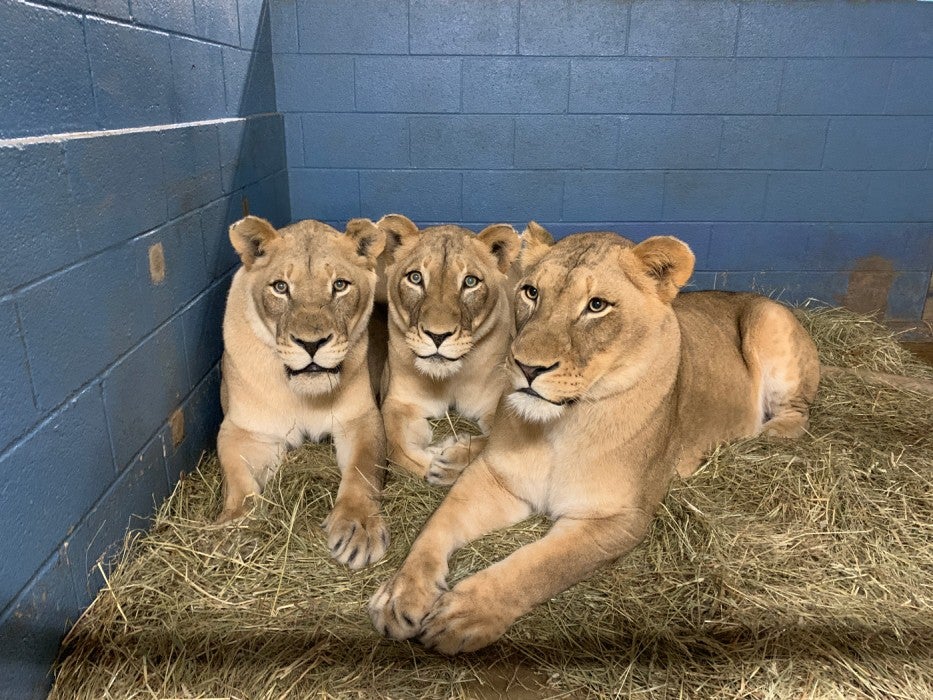
Katy: Shaka and Jumbe, both 6 years old, are the best of friends and are never far from one another. When we feed them, we often see them sitting and eating together. I’ve even caught them cuddling while they sleep.
The girls will playfully stalk each other. They’ll stealthily creep up from behind, pop out from behind a tree and chase each other. Amahle, who is 6 years old, is super playful and will try to get her mom and aunt to play, even when they don’t want to, by sitting on top of them!
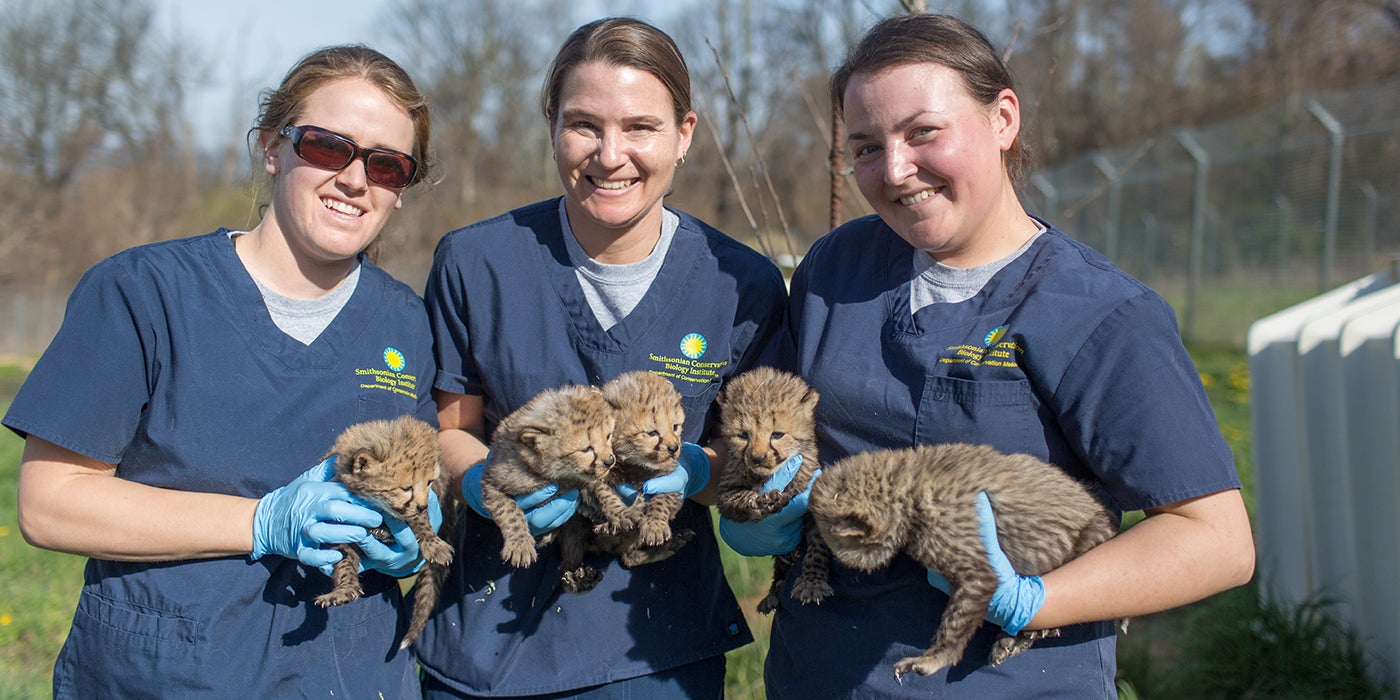
Adri: Every day I get to work with cheetahs up close. It is inspiring to see their beauty and grace, and even their less-than-graceful moments. Cheetahs are very unique, even in the cat world.
Amber: One of the things that separates SCBI from other zoological facilities is that we serve as a breeding facility. A lot of zoos may only care for one or two cheetahs; we care for 29! We also collaborate with other institutions, making us a part of something bigger. We work with the Conservation Centers for Species Survival and the Association of Zoos and Aquariums’ Species Survival Plan to breed these endangered cats and work towards creating a genetically diverse and sustainable cheetah population under human care.
Adri: With so many cats to care for, we have quite a few outdoor enclosures available for our cheetahs. This setup allows us to move them around and to a new area every so often. A new yard brings new sights, scents and neighbors! I think it’s one of the greatest forms of enrichment.
Adri: We can also move some of the furniture around in the yard. Last fall, we placed a hammock bed made of upcycled fire hose in the enclosure which cheetah Echo shares with her four cubs. New furniture, like this, gives the cats new perspectives and height as they survey their habitat. These beds also are a comfortable place for the cheetahs to lay in the sun or under the platform for some shade.
A couple of years ago, we put hay bales in front of the cubs’ hut to act as a wind barrier. Those cubs thought that was the most fun thing. They were leaping on top of the bales, tackling them and tearing them apart. It turned into a giant mound of hay, but they had a blast.
Katy: Enrichment can be as simple as the elements (i.e. temperature outside), vegetation or water features within an animal’s habitat. This is sometimes referred to as “environmental enrichment”. The Washington, D.C., area usually sees some snowfall in the winter. Some of our animals have a blast in the snow, while others don’t seem to care for it very much. One of our Amur tigers, Pavel, falls into the former category.Katy: When he made his debut, it was a very cold and snowy January day. Some of the water in the moat had frozen over, yet when we gave him access to his yard, he decided to go for a swim! Even though Amur tigers are native to Russia (where the winters are very cold) and he is built to handle such extremes, we were shocked to see him literally test the waters given the conditions outside. Even after he spent some time on dry land, he chose to go back in the water again. He just shook off the cold.
Amber: Four years ago, SCBI experienced a giant blizzard. The snow was up to my thighs within 48 hours! Our entire team worked to shovel paths for the cats. One of our cheetahs, a female named Miti, bounded through the snow and came right up to the gate to see what we were doing. She wasn’t phased by it at all. Our other cheetahs were not as enthusiastic and waited patiently in their heated dens while we shoveled them out.
Adri: Our cheetahs are most enthusiastic about food. Once a week, we give each cat a whole frozen-thawed rabbit to eat. Not only does this mimic the prey that they consume in the wild, but carcass feedings are important for their overall health. The skin, fur and bones are full of fiber and aid in the digestive process, and the internal organs are rich in nutrients. Prey items also help strengthen their jaw muscles.
Katy: For both our lions and bobcats, smell is a critical aspect of their lives. A great way we can encourage all our cats to explore their environment is through scent enrichment. In our keeper pantry, we have over 30 unique spices that we can sprinkle or spray around the cats’ habitat, and even on their toys or furniture.Katy: Our lions are attracted to earthy scents like cloves, cinnamon and allspice. The bobcats tend to be drawn to men’s cologne. We know that they enjoy a particular scent when we see them flop down and rub it on themselves — a behavior called “scent-anointing.”
Adri: We don’t typically use scent enrichment with the cheetahs. These cats do not have as good a sense of smell as lions and bobcats do. Animals with a keen sense of smell typically have spiral nasal passages that can collect odor particles and help that animal decipher what they are. Cheetahs, however, have long, straight nasal passages. They are designed this way to help them intake more oxygen as they run, reaching speeds up to 70 miles per hour.
That is why it is important for us to know and understand a species’ biology before we select enrichment items for them. We want the experience to be as rewarding for the animals as possible.
Adri: Cheetahs are particularly interested in any enrichment that moves, especially jolly balls which roll and bounce all over the yard. Often, we will stand at the top of their yard, which is on a hill, and throw the balls down. The cheetahs chase right after them.
Amber: The jolly balls also float, so we can put them in a tub full of water. The cubs — who do not enjoy getting wet — must use some brain power to get their toy out of the water. They won’t climb all the way into the tub, but they will try to whack the ball so only their front paws get wet.
Katy: Amahle seems to especially enjoy playing with these basketball-sized balls that are really durable. Once she has one, she doesn’t want to let it go. She’ll roll on her back, flip the ball in the air and then catch it. She will play with one of those balls for hours.
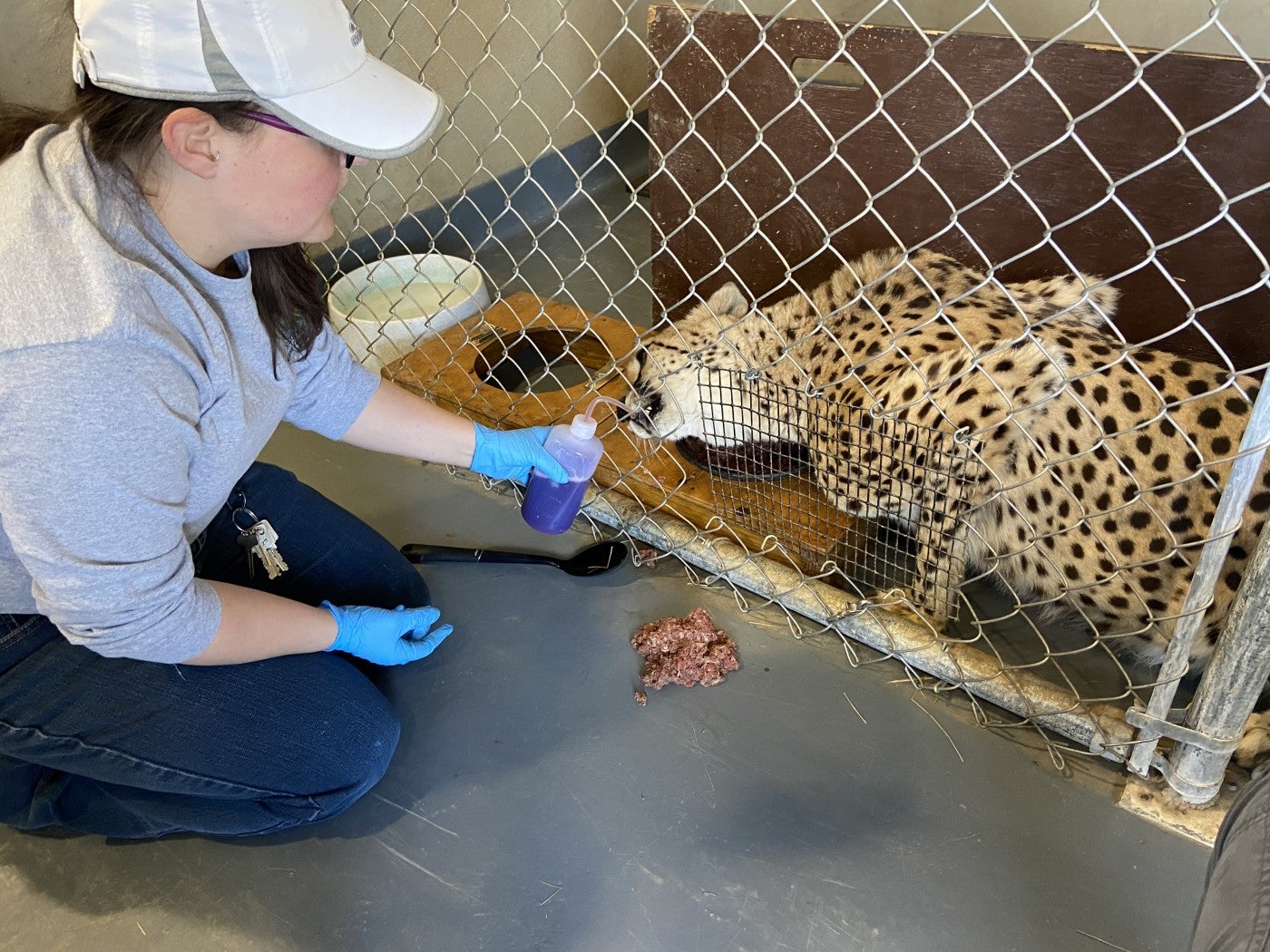
To any aspiring great cat keepers, work with animals any way you can. Get your hands dirty. Work at an animal shelter, vet clinic, wildlife rehab center or try to get experience at a zoo! Whatever way you can get your foot in the door and experience this field will be helpful.
Want to help replenish toys, puzzle feeders and training tools that are a bit run-down yet well loved by the Zoo’s animals? Donate to the Enrichment Trunk. Your support directly benefits the animals at the Smithsonian’s National Zoo and Conservation Biology Institute.
